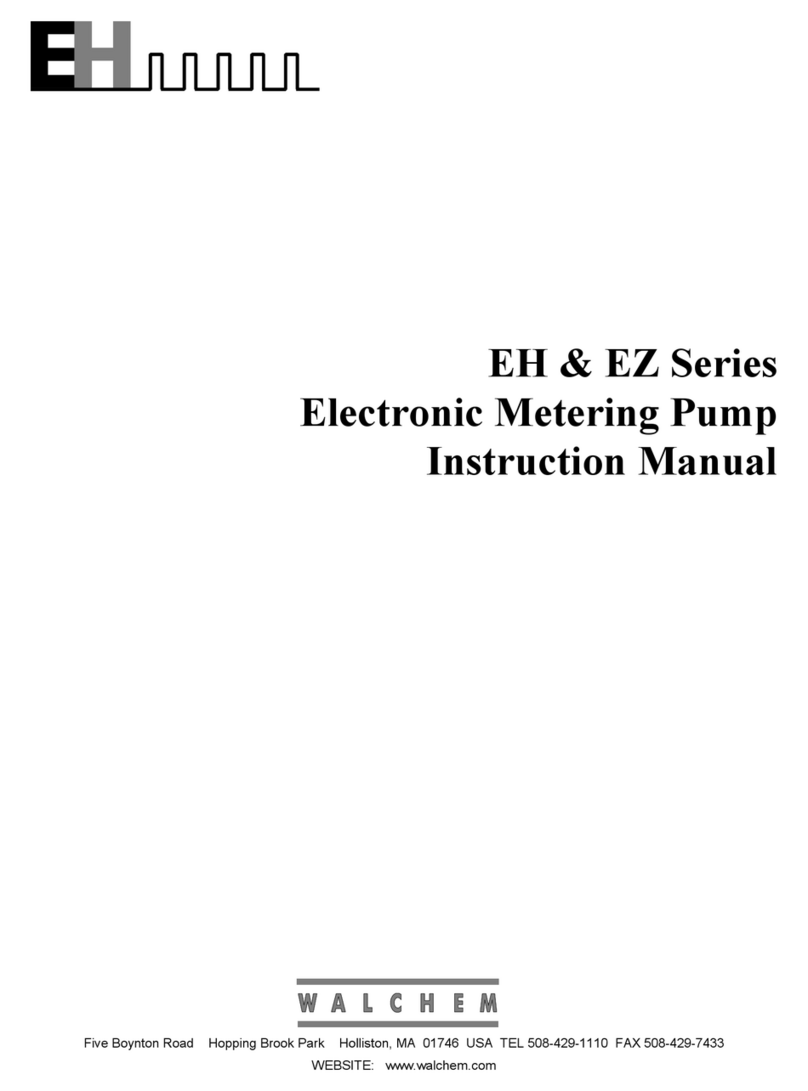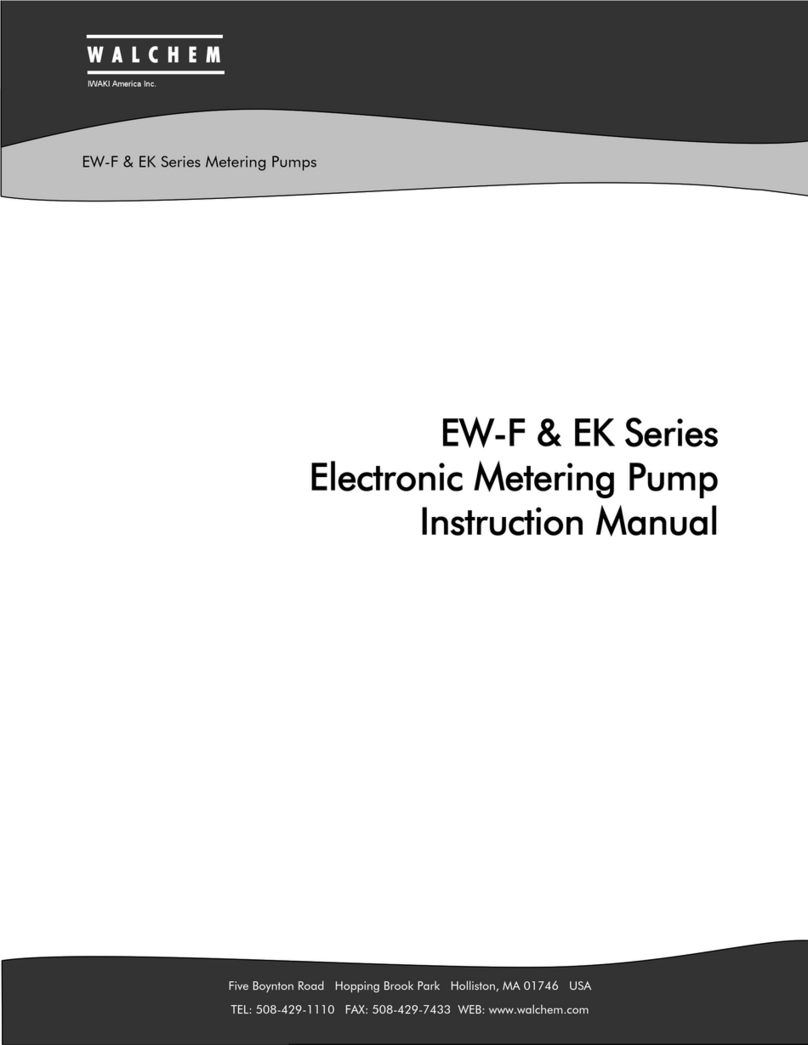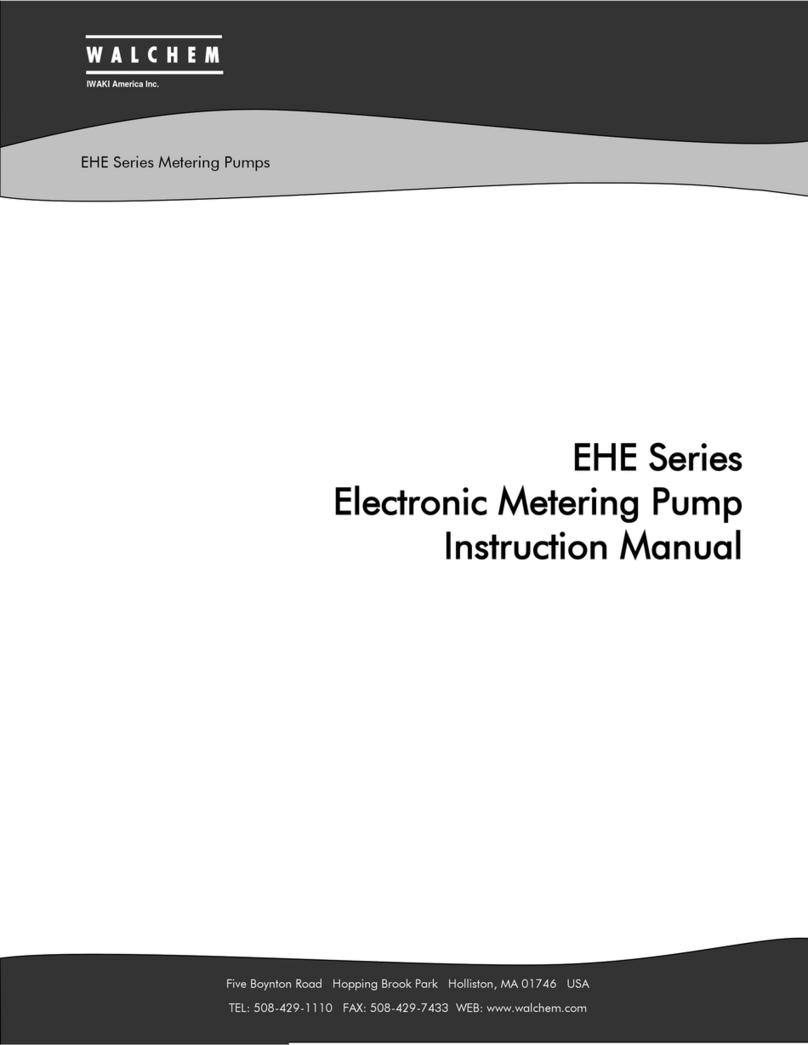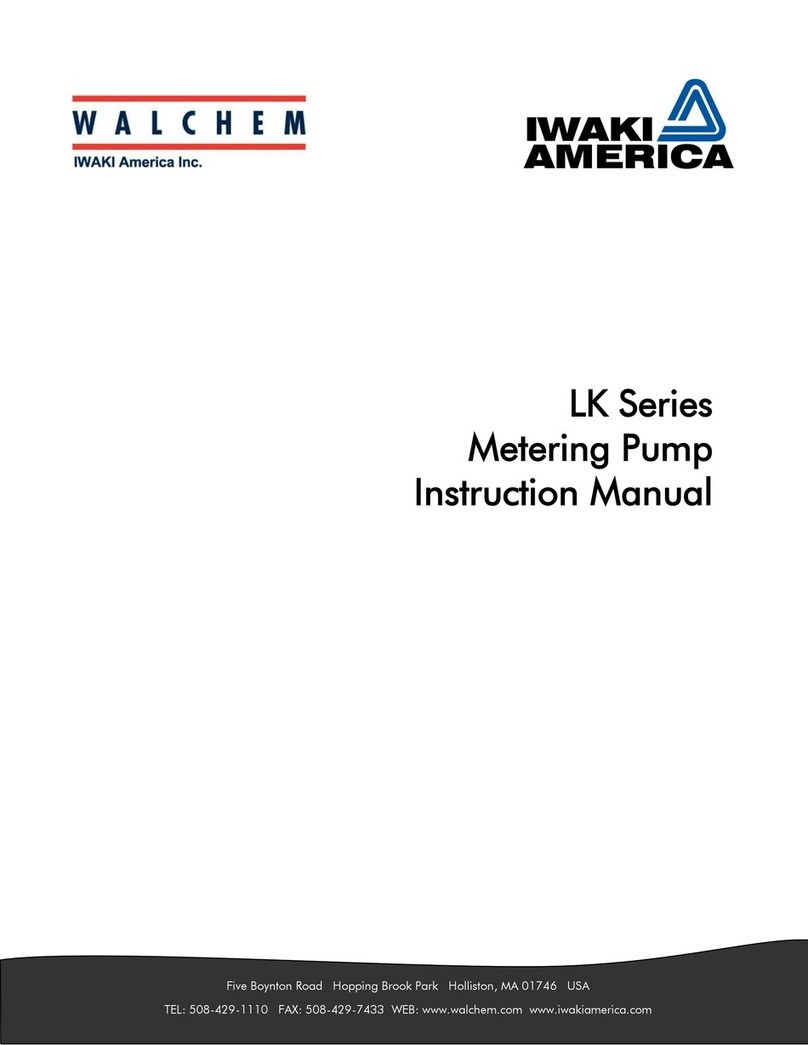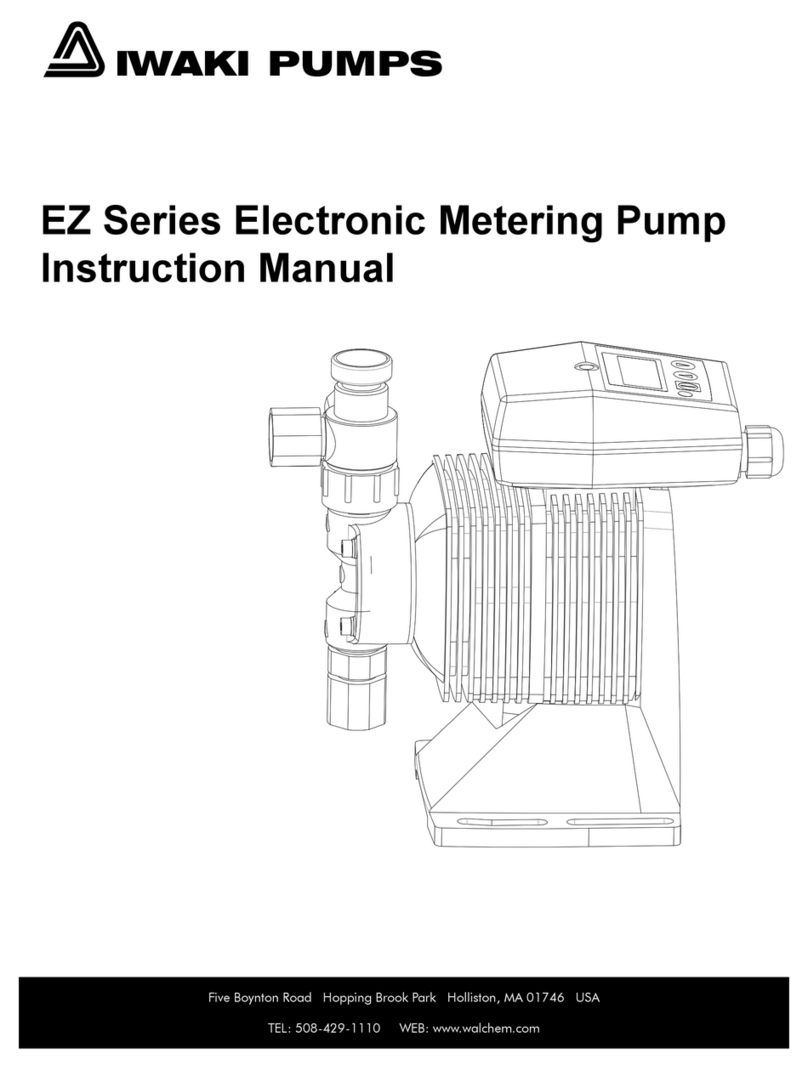
TABLE OF CONTENTS
Thank you for choosing a Walchem EH Series metering pump. This instruction manual deals with the
correct installation, operation, maintenance and troubleshooting procedures for the EHE model metering
pumps. Please read through it carefully to ensure the optimum performance, safety and service of your
pump.
1.0 INTRODUCTION................................................................................................................3
1.1 Safety and Caution Notes ..............................................................................................3
1.2 Principle of Operation.....................................................................................................3
1.3 Specifications.................................................................................................................4
1.4 Dimensions.....................................................................................................................5
2.0 INSTALLATION.................................................................................................................6
2.1 Unpacking ......................................................................................................................6
2.2 Location..........................................................................................................................6
2.3 Supply Tubing ................................................................................................................8
2.4 Discharge Tubing...........................................................................................................8
2.5 Installing Injection/Back Pressure Valve ........................................................................9
2.6 Electrical.........................................................................................................................9
3.0 OPERATION....................................................................................................................10
3.1 Priming.........................................................................................................................10
3.2 Adjustment ...................................................................................................................10
3.3 Calibration....................................................................................................................10
3.4 External Control............................................................................................................11
3.5 STOP Function.............................................................................................................17
3.6 AC Power Interruption..................................................................................................17
4.0 MAINTENANCE...............................................................................................................18
4.1 Diaphragm Replacement..............................................................................................18
4.2 Valve Replacement......................................................................................................18
4.3 Tubing ..........................................................................................................................18
5.0 EXPLODED VIEW AND PARTS GUIDE.........................................................................19
5.1 How to order parts for your metering pump..................................................................19
5.2 Accessories (Not shown)..............................................................................................20
5.3 EHE30, 35, 45 Liquid End Exploded View...................................................................21
5.4 EHE 55 Liquid End Exploded View ..............................................................................23
5.5 Drive Control Components...........................................................................................25
5.6 Assembly Part Numbers...............................................................................................26
5.7 Spare Parts Kit.............................................................................................................26
6.0 TROUBLESHOOTING.....................................................................................................27
7.0 SERVICE POLICY ...........................................................................................................28
2



















